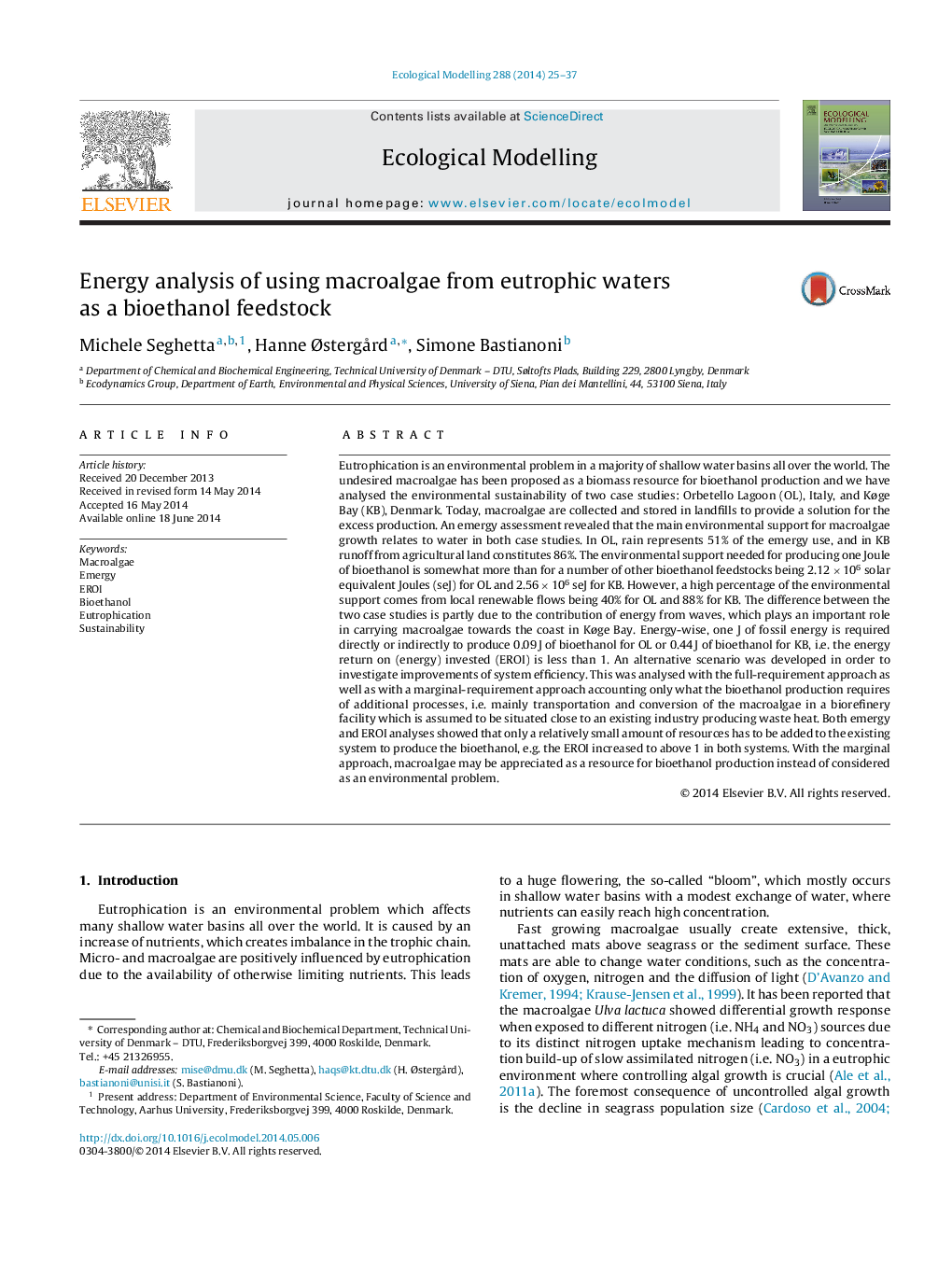| Article ID | Journal | Published Year | Pages | File Type |
|---|---|---|---|---|
| 4375895 | Ecological Modelling | 2014 | 13 Pages |
Abstract
Eutrophication is an environmental problem in a majority of shallow water basins all over the world. The undesired macroalgae has been proposed as a biomass resource for bioethanol production and we have analysed the environmental sustainability of two case studies: Orbetello Lagoon (OL), Italy, and Køge Bay (KB), Denmark. Today, macroalgae are collected and stored in landfills to provide a solution for the excess production. An emergy assessment revealed that the main environmental support for macroalgae growth relates to water in both case studies. In OL, rain represents 51% of the emergy use, and in KB runoff from agricultural land constitutes 86%. The environmental support needed for producing one Joule of bioethanol is somewhat more than for a number of other bioethanol feedstocks being 2.12 Ã 106 solar equivalent Joules (seJ) for OL and 2.56 Ã 106 seJ for KB. However, a high percentage of the environmental support comes from local renewable flows being 40% for OL and 88% for KB. The difference between the two case studies is partly due to the contribution of energy from waves, which plays an important role in carrying macroalgae towards the coast in Køge Bay. Energy-wise, one J of fossil energy is required directly or indirectly to produce 0.09 J of bioethanol for OL or 0.44 J of bioethanol for KB, i.e. the energy return on (energy) invested (EROI) is less than 1. An alternative scenario was developed in order to investigate improvements of system efficiency. This was analysed with the full-requirement approach as well as with a marginal-requirement approach accounting only what the bioethanol production requires of additional processes, i.e. mainly transportation and conversion of the macroalgae in a biorefinery facility which is assumed to be situated close to an existing industry producing waste heat. Both emergy and EROI analyses showed that only a relatively small amount of resources has to be added to the existing system to produce the bioethanol, e.g. the EROI increased to above 1 in both systems. With the marginal approach, macroalgae may be appreciated as a resource for bioethanol production instead of considered as an environmental problem.
Related Topics
Life Sciences
Agricultural and Biological Sciences
Ecology, Evolution, Behavior and Systematics
Authors
Michele Seghetta, Hanne ÃstergÃ¥rd, Simone Bastianoni,
